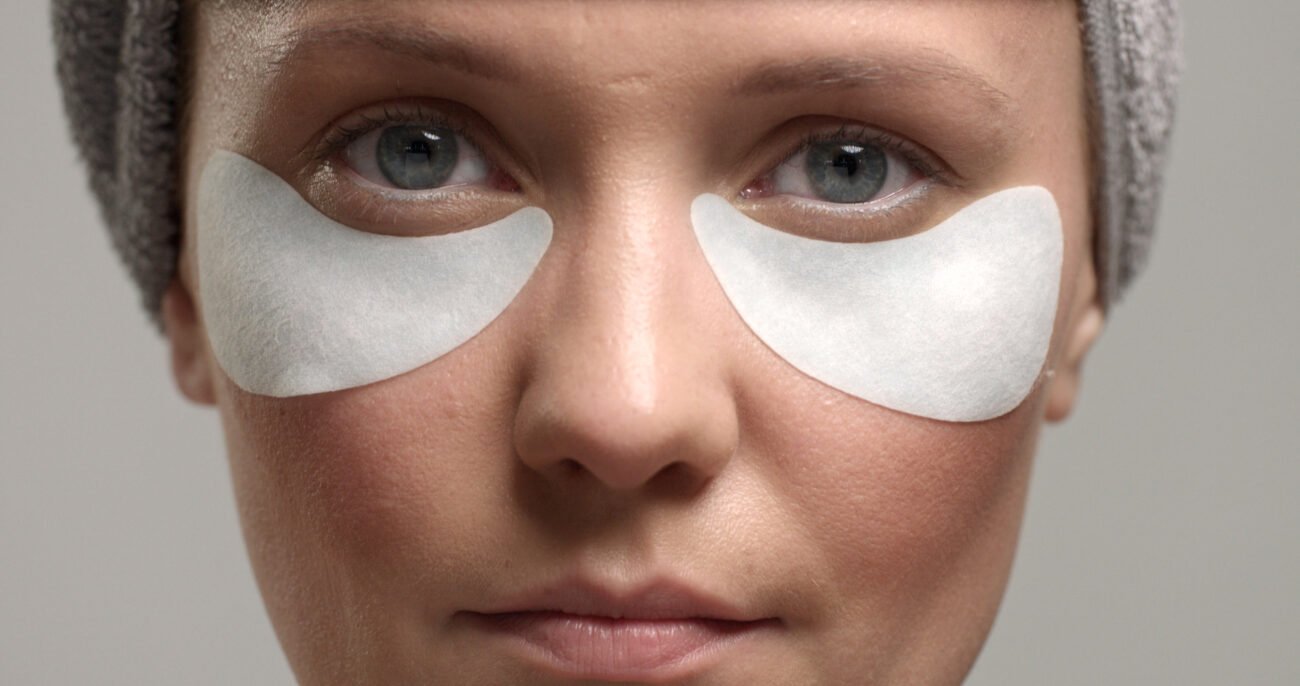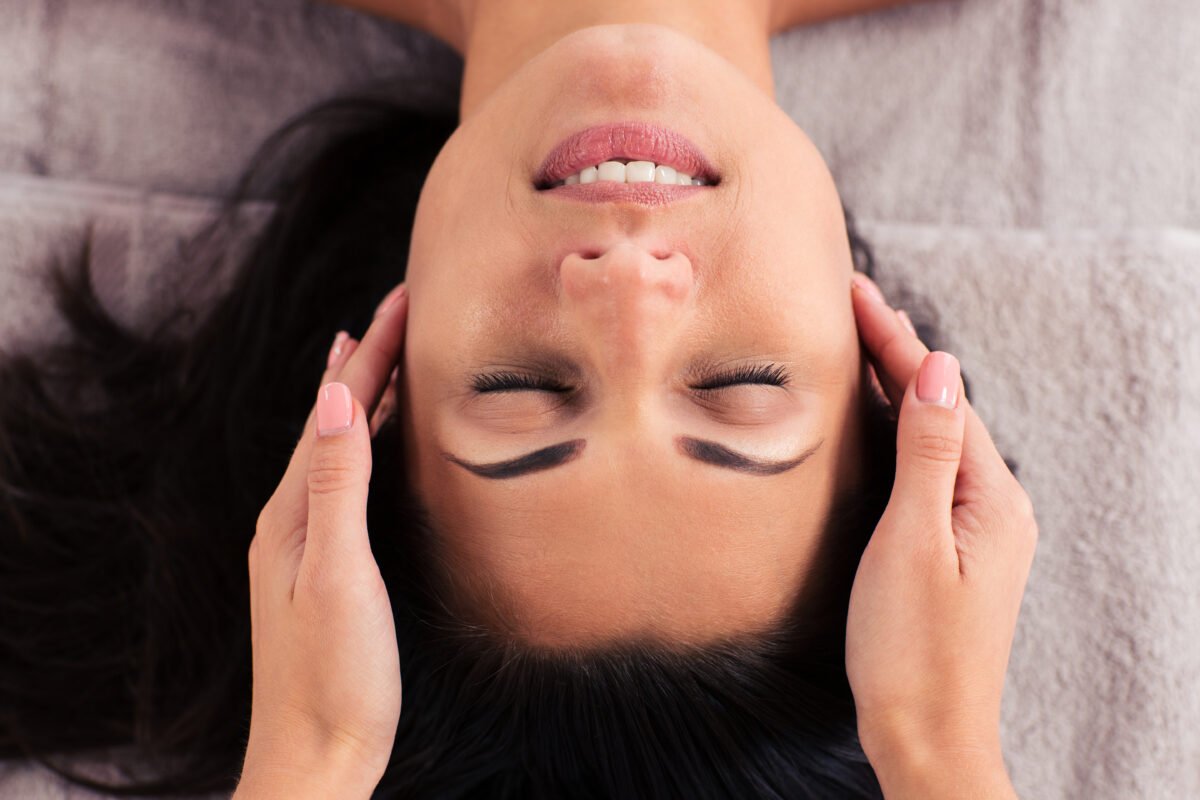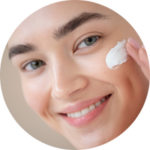The Best Skincare Routine for Oily Skin: A Step-by-Step Guide
Dealing with oily skin can be a challenge, especially when it comes to finding the right skincare routine that keeps shine at bay while ensuring your skin stays hydrated and healthy. Oily skin can often feel like a constant battle between excess sebum and the need for hydration, but with the right products and routine, it is possible to manage it effectively.
In this step-by-step guide, we’ll break down the best skincare routine for oily skin, explaining each step and recommending the most effective products and ingredients to help you achieve a balanced, matte, and clear complexion.
Understanding Oily Skin
Before we dive into the skincare routine itself, it’s important to understand the characteristics of oily skin. Oily skin occurs when the sebaceous glands produce more sebum than your skin needs. This excess oil can make your face appear shiny, contribute to clogged pores, and lead to breakouts. Oily skin tends to be genetic, but it can also be influenced by hormones, diet, stress, and the use of certain products.
Common characteristics of oily skin include:
-
Shiny appearance, especially in the T-zone (forehead, nose, and chin)
-
Enlarged pores, particularly in the T-zone
-
Frequent breakouts or acne, especially on the face, back, or shoulders
-
Thicker skin texture due to excess sebum
Although oily skin can sometimes feel frustrating, it does have its benefits, such as a lower chance of developing wrinkles. The natural oils protect the skin’s barrier and keep it hydrated, making it less prone to dryness or flaking.
Step 1: Cleanse with a Gentle Foaming Cleanser
The first step in any skincare routine is cleansing. For oily skin, it’s important to choose a cleanser that can remove excess oil without stripping the skin of its natural moisture. Harsh cleansers can cause the skin to overproduce more oil in compensation, which can worsen the situation.
Look for a gentle foaming or gel-based cleanser that contains ingredients like salicylic acid or charcoal, both of which help to remove excess sebum while deeply cleansing the pores. These ingredients can also help prevent breakouts and control acne.
Recommended Ingredients:
-
Salicylic Acid: A beta-hydroxy acid (BHA) that penetrates deep into the pores to clear out oil, dirt, and dead skin cells.
-
Tea Tree Oil: Known for its antibacterial properties, tea tree oil can help fight acne-causing bacteria.
-
Charcoal: Helps absorb excess oil and toxins from the skin’s surface.
How to Use: Apply a small amount of the cleanser to damp skin, lather it gently, and massage it into your face in circular motions. Rinse thoroughly with lukewarm water.
Step 2: Exfoliate 2–3 Times a Week
Exfoliation is key to keeping oily skin clear and smooth. The process helps to slough off dead skin cells that can clog pores and contribute to breakouts. However, over-exfoliating can lead to irritation, which in turn can cause the skin to produce even more oil. For oily skin, exfoliating 2-3 times a week is usually enough.
There are two types of exfoliators: physical exfoliants (scrubs) and chemical exfoliants (acids). For oily skin, chemical exfoliants like AHAs (alpha-hydroxy acids) and BHAs (beta-hydroxy acids) are generally more effective, as they penetrate the skin and dissolve dead skin cells without being abrasive.
Recommended Ingredients:
-
Salicylic Acid: A BHA that goes deep into pores, making it excellent for oily, acne-prone skin.
-
Glycolic Acid: An AHA that gently exfoliates the skin’s surface, revealing a smoother texture.
-
Lactic Acid: Another AHA that helps hydrate and exfoliate at the same time.
How to Use: Apply the exfoliating product to clean, dry skin, focusing on problem areas like the T-zone. Leave it on for the recommended time (usually 5–10 minutes), then rinse with lukewarm water. Be sure to follow up with sunscreen, as exfoliation can make your skin more sensitive to UV damage.
Step 3: Tone to Balance Oil Production
Toning is a crucial step in balancing oily skin. Toners help to remove any leftover dirt, oil, or makeup after cleansing and exfoliating, and they also help tighten the pores. A good toner for oily skin should not contain alcohol, as it can dry out the skin and trigger more oil production. Instead, opt for toners with ingredients that help control oil while also soothing the skin.
Recommended Ingredients:
-
Witch Hazel: A natural astringent that helps control oil and reduce the appearance of pores.
-
Niacinamide (Vitamin B3): A soothing ingredient that can help regulate oil production and reduce the appearance of enlarged pores.
-
Rose Water: Helps to calm and hydrate the skin while providing a natural mattifying effect.
How to Use: After cleansing and exfoliating, apply the toner using a cotton pad or your hands. Gently pat it onto your skin, focusing on oily areas like the T-zone. Allow it to absorb before moving on to the next step.
Step 4: Use a Lightweight Moisturizer
It’s a common misconception that oily skin doesn’t need moisturizer. In reality, moisturizing is essential for all skin types, even oily skin. The key is to use a lightweight, oil-free moisturizer that won’t clog pores or contribute to excess shine. Look for gel-based moisturizers that provide hydration without making the skin greasy.
Recommended Ingredients:
-
Hyaluronic Acid: A humectant that draws moisture into the skin, providing hydration without heaviness.
-
Glycerin: Another humectant that helps retain moisture and keep the skin hydrated.
-
Aloe Vera: A soothing ingredient that hydrates and calms irritated skin.
How to Use: After toning, apply a small amount of your lightweight moisturizer to your face and neck. Gently massage it into the skin until fully absorbed.
Step 5: Target Acne with Spot Treatments
If you suffer from acne or blemishes, spot treatments can help target and treat specific problem areas. These treatments typically contain higher concentrations of active ingredients like benzoyl peroxide or salicylic acid, which are effective at reducing breakouts and preventing new ones from forming.
Recommended Ingredients:
-
Benzoyl Peroxide: Targets acne-causing bacteria and helps dry out existing pimples.
-
Sulfur: Known for its ability to treat acne and absorb excess oil.
-
Salicylic Acid: A BHA that helps unclog pores and reduce inflammation.
How to Use: Apply the spot treatment directly to the affected area after moisturizing, and allow it to dry before applying makeup (if needed). Be cautious not to overuse spot treatments, as they can be drying.
Step 6: Apply Sunscreen Daily
Sunscreen is a must for every skin type, including oily skin. The key is to find a non-comedogenic, oil-free sunscreen that won’t clog your pores or leave you feeling greasy. Opt for a lightweight, gel-based sunscreen with a matte finish to control shine and protect your skin from harmful UV rays.
Recommended Ingredients:
-
Zinc Oxide: A physical sunscreen ingredient that provides broad-spectrum protection without clogging pores.
-
Titanium Dioxide: Another mineral sunscreen ingredient that offers effective protection and is gentle on the skin.
-
Niacinamide: Also found in many sunscreens, niacinamide helps regulate oil production while providing additional skin benefits.
How to Use: Apply sunscreen generously to your face and neck as the last step in your morning routine, and be sure to reapply throughout the day if you’re exposed to direct sunlight for long periods.
Additional Tips for Oily Skin
-
Blotting Papers: Keep blotting papers in your bag to absorb excess oil during the day without disrupting your makeup.
-
Avoid Touching Your Face: Your hands can transfer dirt, oil, and bacteria to your face, leading to breakouts.
-
Diet: Eating a balanced diet rich in antioxidants and omega-3 fatty acids can help regulate oil production. Avoid greasy or sugary foods, which can contribute to breakouts.
-
Stay Hydrated: Drinking plenty of water throughout the day helps maintain healthy skin and regulates oil production.
Additional Tips for Managing Oily Skin
While having an effective skincare routine is key to controlling oily skin, there are several other lifestyle habits and tips that can complement your regimen. Let’s dive into a few more things you can do to keep your skin in check:
1. Adjust Your Routine Based on Seasons
Your skincare routine might need to change depending on the season. In hot and humid months, oily skin tends to produce more oil due to increased sweat. During colder months, the skin can lose moisture and become dehydrated, leading to increased oil production as the skin tries to compensate.
In the summer, you may want to switch to a more mattifying moisturizer or use a stronger exfoliating toner. In the winter, you can opt for a richer moisturizer to maintain hydration, while still using an oil-free, lightweight cleanser. Listen to your skin’s needs and adjust your routine accordingly to maintain balance year-round.
2. Avoid Over-Cleansing Your Skin
It can be tempting to over-cleanse when you’re dealing with oily skin, but doing so can backfire. Over-cleansing can strip your skin of its natural oils, prompting it to produce even more sebum to compensate for the loss. This can lead to an oilier complexion and worsen breakouts.
Instead of over-cleansing, aim to cleanse your face twice a day—once in the morning and once before bed. If you’ve been sweating or exposed to pollutants throughout the day, you may also want to cleanse after working out or after wearing makeup for long periods. However, remember that gentle is key. Use mild products that maintain your skin’s pH balance without being too harsh.
3. Use Non-Comedogenic Products
Non-comedogenic products are formulated specifically not to clog pores, which is a critical consideration for anyone with oily or acne-prone skin. Make sure that the skincare products, makeup, and even sunscreen you use are labeled “non-comedogenic.” This will help prevent clogged pores and reduce the likelihood of developing acne or blackheads.
Pro Tip: Even your foundation should be non-comedogenic. Many foundations designed for oily skin offer oil-control properties and a matte finish that won’t contribute to clogged pores.
4. Incorporate Clay Masks into Your Routine
Clay masks are excellent for oily skin because they help absorb excess oil and impurities, providing a deep cleanse without over-drying the skin. A kaolin clay or bentonite clay mask can help balance oil production, reduce shine, and clear out blocked pores.
Use a clay mask once or twice a week as an added step to your skincare routine. Apply a thin layer to clean skin, leave it on for about 10-15 minutes, and then rinse off with lukewarm water. Don’t overdo it, as frequent use of clay masks can dry out your skin, which could, in turn, cause the skin to produce even more oil.
5. Consider Professional Treatments
If your oily skin is accompanied by frequent breakouts or persistent acne, you may want to consider professional treatments to help improve your skin’s appearance. Dermatologists can offer a range of solutions, such as:
-
Chemical Peels: These treatments use acids like salicylic acid or glycolic acid to exfoliate the skin, clear pores, and reduce oil production. They can be especially beneficial for acne-prone skin.
-
Microdermabrasion: This treatment uses a device to exfoliate the skin and remove dead skin cells, which can help with clogged pores and prevent breakouts.
-
Laser Treatments: Certain types of laser treatments can reduce the size of sebaceous glands, effectively controlling oil production. These treatments are usually performed in a dermatologist’s office.
These treatments can provide long-term benefits when combined with a consistent at-home routine.
Conclusion: Crafting the Perfect Skincare Routine for Oily Skin
The best skincare routine for oily skin is all about balance. While oily skin tends to produce excess sebum, it still needs hydration and care to stay healthy. By following the right steps—cleansing, exfoliating, toning, moisturizing, and protecting your skin from the sun—you can maintain a smooth, clear, and matte complexion.
Additionally, adopting good habits like eating a balanced diet, staying hydrated, managing stress, and getting quality sleep can significantly improve your skin’s health. If your oily skin is accompanied by stubborn acne or other skin concerns, don’t hesitate to seek professional treatments to help control your symptoms.













